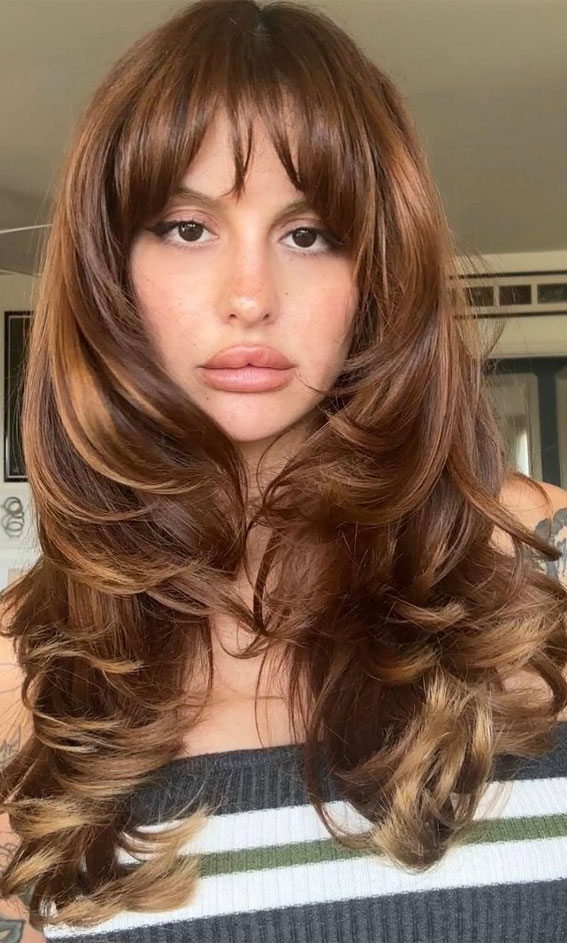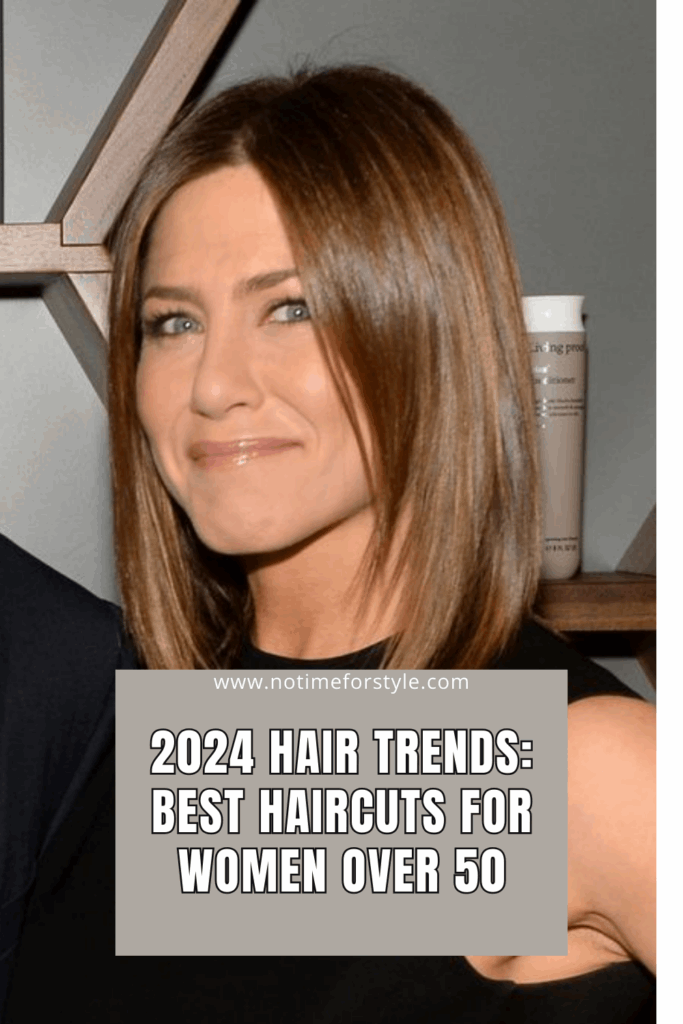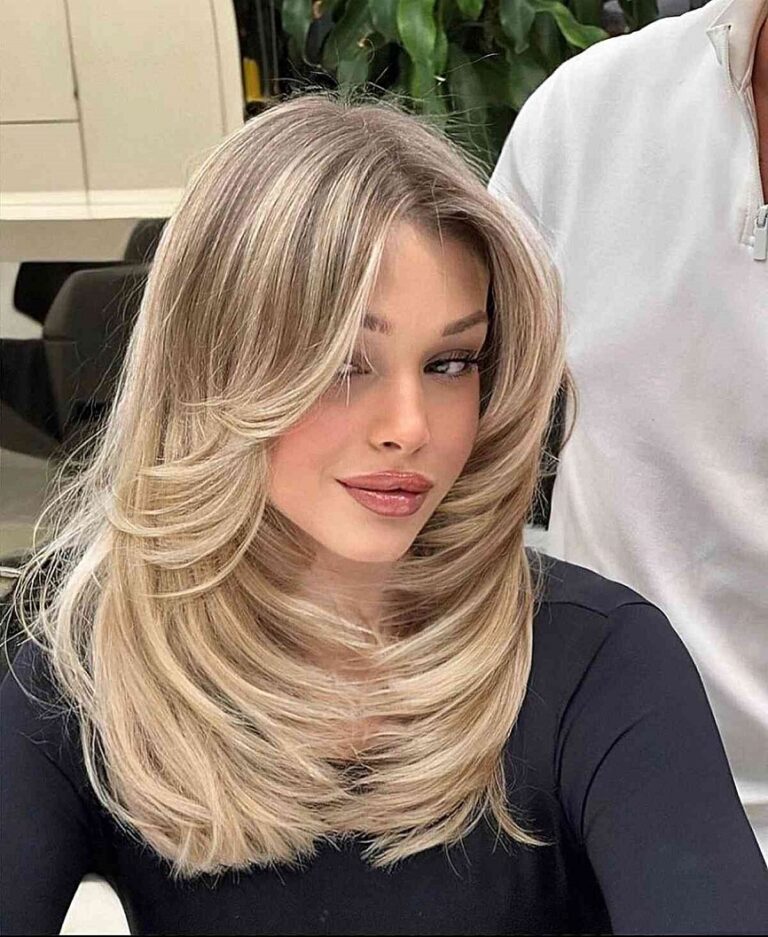Types of Haircuts for Women with Long Hair: A Comprehensive Guide to Styling Extended Lengths

Long hair represents a versatile foundation for a myriad of aesthetic expressions. Far from being a monolithic style, extended tresses can be dramatically transformed through strategic cutting, offering a diverse palette of looks that enhance natural beauty, add dimension, and optimize manageability. The careful selection of a cutting approach for prolonged hair is paramount for achieving a desired aesthetic, complementing facial features, and ensuring the vitality of the strands. This guide explores the principal categories of cuts available for lengthy locks, detailing their characteristics, benefits, and suitability for various hair textures and personal styles.
The Art of Layering: Adding Movement and Dimension
Layering is perhaps the most fundamental and versatile technique for shaping extended lengths. It involves cutting sections of hair to different lengths, creating a tiered effect that can add volume, reduce bulk, and introduce dynamic movement. The specific placement and length of layers dramatically influence the final outcome.
Long Layers: This classic approach involves cutting layers that are subtly shorter than the overall length, typically starting below the chin or collarbone. Long layers are ideal for adding soft movement and texture without sacrificing significant length. They work exceptionally well on thick hair, helping to remove weight and prevent a ‘blocky’ appearance, while on finer hair, they can create an illusion of greater density and bounce. The benefit lies in their ability to provide shape and flow, allowing the hair to fall gracefully and appear less heavy.
Face-Framing Layers: Designed to highlight facial features, these layers are cut around the face, often starting at the cheekbones or jawline, and gradually blending into the longer lengths. They soften sharp angles, accentuate cheekbones, and draw attention to the eyes. This modification for long tresses is particularly effective for adding a delicate touch and can be customized to suit various face shapes, offering a subtle yet impactful transformation. They provide a softer transition between the hair and the face, making the overall look more harmonious.
V-Cut and U-Cut Layers: These styles are characterized by the shape created at the back of the head when the hair is gathered. A V-cut features a distinct V-shape, with the longest point at the center back and gradually shorter layers ascending towards the sides. This provides a dramatic, pointed silhouette. The U-cut, conversely, offers a softer, rounded U-shape, creating a more gentle and flowing appearance. Both cutting techniques for lengthy tresses add significant movement and allow the layers to cascade beautifully, enhancing the hair’s natural texture and body. They are excellent choices for those desiring a sculpted yet fluid aesthetic.
The Shag Cut (Modern Long Version): A contemporary interpretation of a retro classic, the long shag is characterized by abundant, choppy layers throughout the crown and sides, often paired with bangs. This style prioritizes texture, volume, and an effortlessly cool aesthetic. The layers are typically shorter at the top and progressively lengthen towards the ends, creating a distinctive, dishevelled yet chic look. It is particularly well-suited for wavy and curly hair, as it enhances natural texture and movement, offering a low-maintenance yet highly stylish option for prolonged hair.
The Butterfly Cut: A highly popular, voluminous, and layered style that creates the illusion of shorter hair around the face while maintaining significant length at the back. This style involves two distinct sets of layers: shorter, face-framing layers that hit around the chin or collarbone, and longer layers that blend seamlessly into the overall length. When styled, the shorter layers can be flipped out or curled under, mimicking the appearance of a shorter bob or lob, while the longer sections preserve the desired length. This aesthetic choice for prolonged hair offers versatility, allowing for different looks depending on styling, and is excellent for adding dramatic volume and movement.
The Octopus Cut: This is a more edgy and disconnected variation of the shag, characterized by a rounded, voluminous top section that transitions into longer, thinner, ‘tentacle-like’ layers at the perimeter. The contrast between the fuller crown and the wispy ends gives it a unique, fashion-forward appeal. Often paired with a blunt fringe, this hair design for lengthy strands is perfect for those seeking a bold, textured look that stands out. It works best on straight or slightly wavy hair to emphasize the distinct layering.
Blunt Cuts: Emphasizing Strength and Density
In stark contrast to layered styles, blunt cuts offer a strong, precise, and uniform look. These styles for extended lengths are characterized by all the hair being cut to a single length, creating a sharp, clean line at the bottom.
Straight Across Cut / One-Length Cut: This is the quintessential blunt style, where the hair is cut perfectly straight across the bottom, with no layers or graduation. The primary benefit of this hair concept for long strands is its ability to make Upswept Hairstyles For Short Hair Elevating Shorter Lengths With Sophistication And Style the hair appear thicker and denser, as all the weight is concentrated at the ends. It creates a powerful, sleek, and polished silhouette that exudes sophistication. This style is particularly effective on fine to medium hair textures, giving them a fuller appearance, and is a timeless choice for those who appreciate simplicity and elegance.
Integrating Bangs: A Frame for the Face
Bangs, or a fringe, can dramatically alter the perception of a haircut, adding a focal point and framing the face. They can be incorporated into virtually any long hair shaping method.
Full Bangs: Cut straight across the forehead, typically just above the eyebrows, full bangs create a bold and impactful statement. They can soften a strong jawline, draw attention to the eyes, and give a youthful appearance. This modification for long tresses requires regular trimming but offers a significant stylistic change, adding a touch of drama and chic sophistication.
Curtain Bangs: Characterized by a middle part and longer pieces that sweep to the sides, resembling curtains, this style is soft, versatile, and highly flattering. Curtain bangs blend seamlessly into face-framing layers, offering a low-maintenance fringe option that grows out gracefully. They work well with various face shapes and hair textures, providing a gentle frame that highlights the eyes and cheekbones without the commitment of a full fringe.
Side-Swept Bangs: These bangs are cut longer on one side and swept across the forehead, blending into the longer lengths. They offer a softer, more subtle approach to fringe, adding an element of elegance and asymmetry. Side-swept bangs are excellent for softening angular features and adding a touch of sophistication, making them a popular choice for those seeking a less dramatic fringe.
Wispy Bangs: Light and delicate, wispy bangs are cut sparsely across the forehead, allowing some forehead to show through. They provide a softer, more ethereal look compared to full bangs, offering a hint of fringe without the heaviness. This cutting technique for lengthy tresses is ideal for those who desire a subtle frame for their face and a low-commitment option.
Advanced Texturizing Techniques
Beyond the primary cut, various texturizing methods can be employed to refine the shape, enhance movement, and manage bulk within extended lengths.
Point Cutting: This technique involves holding the scissors vertically and cutting into the ends of the hair, creating a softer, more textured finish than a blunt cut. It helps to reduce bulk and create a more natural, feathered edge, preventing the hair from looking too heavy or stiff.
Slide Cutting: Used to create seamless layers and add fluid movement, slide cutting involves sliding the scissors down the hair shaft at an angle. This method is excellent for blending layers and achieving a soft, graduated effect without harsh lines.
Slicing: This technique involves opening the scissors and sliding them along the interior of a section of hair, removing weight without altering the external length. It is particularly useful for reducing bulk in thick hair and adding internal movement, allowing the hair to fall more naturally.
Considerations for Selecting a Hair Design for Lengthy Strands
Choosing the Splatoon Hairstyle Names A Comprehensive Analysis Of Inkling And Octoling Customization optimal cutting approach for prolonged hair involves more than just aesthetic preference; it requires consideration of several key factors:
- Face Shape: Certain styles complement specific face shapes. For instance, face-framing layers can soften a square jawline, while full bangs can balance a long face.
- Hair Texture: The natural texture of the hair (straight, wavy, curly, coily) significantly influences how a cut will fall and behave. Layers enhance natural waves and curls, while blunt cuts highlight the sleekness of straight hair.
- Hair Density: Fine hair benefits from cuts that add volume and density, such as long layers or blunt ends. Thick hair often requires extensive layering or texturizing to reduce bulk and enhance movement.
- Lifestyle and Maintenance: Some styles, like blunt cuts, require less daily styling but more frequent trims to maintain their sharp line. Heavily layered or bang-inclusive styles might demand more regular styling and maintenance.
- Desired Aesthetic: Whether seeking a classic, modern, edgy, romantic, or effortless look, the chosen hair design for lengthy strands should align with the individual’s personal style and desired image.
The transformation of long hair through strategic cutting is a nuanced art. A skilled professional stylist possesses the expertise to assess these factors, recommending the most suitable hair concepts for long strands that not only flatter but also empower the individual’s unique expression. The right cut can breathe new life into extended tresses, turning a simple length into a captivating and personalized statement.
FAQs by Types of Haircuts for Women with Long Hair
Q1: How frequently should long hair be trimmed to maintain its shape and health?
A1: Regular trims are crucial for maintaining the integrity and shape of extended lengths. A trim every 8-12 weeks is generally recommended to remove split ends, which can travel up the hair shaft and cause further damage. The frequency may vary based on the specific cutting approach for prolonged hair, hair health, and growth rate. For blunt cuts, more frequent trims (every 6-8 weeks) might be necessary to preserve the sharp line.
Q2: Can layered cuts make fine long hair appear thinner?
A2: When executed improperly, excessive or poorly placed layers can indeed make fine long hair appear thinner, especially if too much hair is removed from the interior. However, strategically placed long layers can add volume and movement, creating the illusion of greater density. Consultation with a skilled stylist is essential to ensure the layering technique complements fine hair rather than detracting from its fullness.
Q3: Are bangs suitable for all face shapes with long hair?
A3: Bangs can be adapted to suit most face shapes when integrated into long hair modifications. The key lies in selecting the appropriate style of fringe. For instance, curtain bangs are highly versatile and flatter many shapes, while full, blunt bangs might be ideal for balancing a long face. A professional assessment can determine the most complementary fringe style for individual facial features.
Q4: What is the primary benefit of a blunt cut for long hair compared to a layered style?
A4: The primary benefit of a blunt cut for long hair is its ability to create a strong, dense appearance. By cutting all the hair to a single length, the weight is concentrated at the ends, making the hair look thicker and fuller. This contrasts with layered styles, which prioritize movement, volume, and texture by distributing weight throughout the hair.
Q5: How can one add volume to long hair without sacrificing length?
A5: Adding volume to long hair without significantly reducing length can be achieved through several cutting techniques for lengthy tresses. Long layers, particularly those starting below the chin, can introduce movement and lift. Face-framing layers can also contribute to a sense of fullness around the face. Additionally, subtle texturizing techniques like point cutting at the ends can create a lighter, more voluminous finish.
Tips by Types of Haircuts for Women with Long Hair
- Prioritize Professional Consultation: Always seek the advice of an experienced stylist. A professional can accurately assess hair texture, density, growth patterns, and face shape to recommend the most suitable cutting approach for prolonged hair.
- Communicate Clearly: Bring reference images to illustrate desired styles. Articulate preferences regarding length retention, volume, and maintenance expectations to ensure the stylist understands the vision.
- Consider Hair Health: Healthy hair holds a style better. Regular conditioning treatments and heat protection are vital, regardless of the chosen hair design for lengthy strands. Discuss any concerns about damage or dryness with the stylist.
- Embrace Natural Texture: Work with the hair’s natural texture rather than against it. Layers can enhance waves and curls, while blunt cuts highlight the sleekness of straight hair. Choosing a style that complements natural texture reduces daily styling effort.
- Understand Maintenance Requirements: Different cutting techniques for lengthy tresses have varying maintenance needs. Bangs require frequent trims, and heavily layered styles might necessitate more styling. Be prepared for the upkeep associated with the chosen aesthetic choice for prolonged hair.
- Experiment with Styling: Even with a specific cut, styling versatility exists. Explore different ways to wear the hair—straight, wavy, up, or down—to maximize the potential of the chosen long hair modification.
- Regular Trims are Non-Negotiable: To maintain the shape, health, and intended effect of any long hair modification, regular trims are essential. This prevents split ends and preserves the integrity of the cut.
Conclusion by Types of Haircuts for Women with Long Hair
The realm of long hair modifications offers an extensive spectrum of possibilities for individuals seeking to define or redefine their aesthetic. Far from being a uniform entity, extended tresses can be sculpted into myriad forms, each imparting a distinct character and enhancing unique features. From the dynamic movement introduced by various layering techniques—such as long, face-framing, V-cut, U-cut, butterfly, or octopus styles—to the strong, sophisticated lines of a blunt cut, the strategic shaping of lengthy locks is an art form. The integration of bangs, whether full, curtain, side-swept, or wispy, further customizes these designs, framing the face and adding a personalized touch.
The decision regarding the optimal cutting approach for prolonged hair is a considered one, influenced by hair texture, density, face shape, and lifestyle. A well-executed hair design for lengthy strands not only elevates an individual’s appearance but also contributes to hair health and manageability. Ultimately, the diversity of cutting techniques for lengthy tresses ensures that every individual with extended locks can discover a style that resonates with their personal expression, transforming their hair into a powerful statement of individuality and elegance.







More suggestion: Virtual Hairstyles For Women Over Exploring Digital Transformations For Mature Beauty